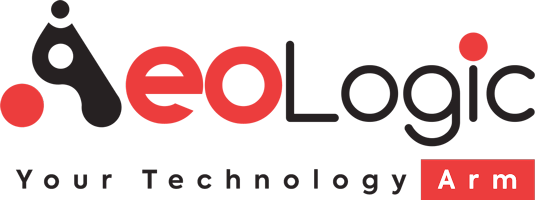In the fast-moving digital world, businesses often need extra technical help to handle new projects, improve systems, or fill skill gaps. But when it comes to hiring external teams, companies usually face a big question — should we go for IT staff augmentation or traditional outsourcing?
Both models aim to solve similar problems but in very different ways. Understanding the difference between these two can help companies make smarter decisions, save money, and manage projects more efficiently.
This article explains IT Staff Augmentation vs. Traditional Outsourcing, explores their advantages, challenges, and helps you understand which model best fits your business needs.
Understanding IT Staff Augmentation
IT Staff Augmentation is a hiring model where a company brings in outside experts or professionals to work alongside its existing team. These specialists can join temporarily for a specific project or longer, depending on the company’s needs.
Instead of outsourcing an entire project, businesses add skilled professionals to their internal teams. The main goal here is to strengthen the current team, not replace it.
For example, let’s say your company is building a new mobile app but lacks a UI/UX designer. Rather than hiring a full-time employee or outsourcing the project, you can bring in a designer through staff augmentation until the work is done.
How IT Staff Augmentation Works
1. The company identifies a skill gap or a need.
2. A staffing partner provides professionals who meet those skills.
3. The external experts work as part of the in-house team under the company’s management
4. Once the project is complete, the professionals move on to another assignment.
This approach is flexible, cost-effective, and gives companies direct control over the project and its outcomes.
Understanding Traditional Outsourcing
Traditional Outsourcing is quite different. Here, a company hires another organization (or vendor) to handle an entire project or process. The outsourcing partner manages the planning, staffing, execution, and delivery.
For example, if a retail company wants to build an e-commerce platform, instead of hiring developers one by one, it can outsource the whole project to an IT firm that specializes in e-commerce development.
Once the agreement is signed, the outsourcing company handles everything — from design to coding, testing, and even post-launch support. The client only monitors progress and receives updates.
How Traditional Outsourcing Works
1. The business defines the scope and requirements of the project.
2. A third-party vendor is selected through a contract.
3. The vendor forms a team, executes the project, and delivers the final result.
4. The business pays based on fixed milestones or deliverables.
Traditional outsourcing works best for businesses that want to save time, reduce management load, and focus on core business activities
IT Staff Augmentation vs. Traditional Outsourcing: Key Differences
Let’s break down the main differences between IT Staff Augmentation vs Traditional Outsourcing so you can see clearly how each model works in practice.
Category IT Staff Augmentation Traditional Outsourcing
Control The company keeps full control of the project and manages daily operations. The vendor controls project execution and delivery.
Management Managed internally by the client’s team. Managed completely by the service provider.
Integration External staff work alongside in-house employees. Outsourced teams work separately from the company.
- Flexibility High — companies can add or remove members anytime. Limited — contracts and scope define flexibility.
- Costs Paid on hourly or monthly basis. Fixed price or milestone-based payments.
- Speed Faster onboarding of individuals. Slower, as full contracts and planning are needed.
- Risk The company holds more responsibility. Vendor takes higher delivery risk.
- Knowledge Retention Stays with the internal team. Stays with the outsourcing vendor.
Benefits of IT Staff Augmentation
IT staff augmentation has gained huge popularity among growing companies because of its flexibility and control. Businesses get to choose professionals they want, manage them directly, and scale teams up or down based on project needs. Let’s look at the main benefits.
Access to Global Talent
With staff augmentation, companies can hire skilled professionals from anywhere in the world. This gives access to top talent without being limited by geography. You can bring in developers, designers, or QA experts with very specific skills who may not be available locally.
Full Control Over Projects
Unlike outsourcing, where the external company handles everything, staff augmentation keeps you in charge. You can assign work, review progress, and make quick changes. This level of control helps maintain quality and transparency.
Cost-Effective Resource Management
Hiring full-time employees for short-term projects is expensive. Staff augmentation lets you avoid long-term commitments. You pay only for the duration of the project, making it more budget-friendly.
Quick Scalability
When projects grow or deadlines change, companies can quickly add or remove members from their augmented team. This makes it easy to handle workloads without over-hiring or slowing down.
Seamless Collaboration
Augmented staff blend with your in-house team. They use the same tools, follow your processes, and align with your company culture. This smooth collaboration improves efficiency and team spirit.
Reduced Recruitment Time
Traditional hiring can take weeks or months. With staff augmentation, hiring partners already have vetted candidates ready. This saves time and helps projects start faster.
Benefits of Traditional Outsourcing
While staff augmentation focuses on flexibility, traditional outsourcing is about convenience and expertise. Businesses hand over entire projects to trusted vendors who deliver end-to-end solutions.
Here’s why many companies still choose outsourcing:
Complete Project Ownership by Vendor
Outsourcing transfers full responsibility for project delivery to the vendor. This allows companies to focus on their core business areas while the external team handles development, testing, and deployment.
Cost Predictability
Outsourcing is often based on fixed-price contracts. Companies know exactly what they’ll pay, which helps in budgeting and financial planning.
Access to Specialized Teams
Vendors bring ready-made teams with experience in multiple technologies. Whether it’s cloud computing, cybersecurity, or AI, outsourcing partners often have deep expertise.
Lower Internal Workload
Since the vendor manages everything, your internal teams don’t have to worry about day-to-day technical details. This helps reduce stress and workload on your employees.
Faster Delivery Time
Outsourcing companies work with established workflows and dedicated resources. They can often deliver projects faster than a newly formed in-house team.
Ideal for Non-Core Functions
Businesses can outsource areas like IT support, HR systems, or data entry to external providers. This lets them focus on what matters most — product development, customer service, or iinnovations
Challenges in Both Models
Even though both IT staff augmentation and traditional outsourcing bring great advantages, they also have their own challenges. Knowing these helps businesses make realistic decisions.
Challenges in IT Staff Augmentation
- Requires internal management time and effort.
- Communication gaps may arise with remote team members.
- If augmented staff leave mid-project, replacements need quick onboarding.
- More responsibility remains on your in-house project managers.
- Challenges in Traditional Outsourcing
- Less control over project progress and daily decisions.
- Quality might vary between vendors.
- Hidden costs may appear in fixed contracts if project scope changes.
- Risk of data privacy issues when sharing sensitive information externally.
Real-World Example
Let’s say a fintech company wants to build a mobile app.
If it chooses IT staff augmentation, it may hire 3–4 external developers to work with its internal team. The company manages them directly, ensuring all coding standards and designs align with existing systems.
But if it chooses traditional outsourcing, it will hire an entire external company to handle the project. The outsourcing firm will plan, design, develop, test, and deliver the finished product on its own.
Both approaches can succeed, but the right choice depends on budget, timeline, internal team strength, and the level of control the company wants.
When to Choose Which Model
Choosing between IT staff augmentation vs traditional outsourcing depends on how your company works, how clear your project scope is, and what kind of control you want to keep.
Let’s look at both sides.
Go for IT Staff Augmentation if you want:
1. Direct Control:
You prefer managing the day-to-day work and guiding the project yourself.
2. Specialized Experts for Short Time:
You need certain skills – like cloud migration or DevOps – for a few months only.
3. Flexibility:
Your project scope changes often, and you want to scale your team quickly without long hiring cycles.
4. Knowledge Retention:
You want the project knowledge and workflow to stay inside your company rather than with a vendor.
5. Smooth Integration:
Your internal team is already strong, and you just need a few more hands to meet deadlines.
Choose Traditional Outsourcing if you want:
1. End-to-End Delivery:
You’d rather assign the full project to a partner who can plan, build, and deliver it completely.
2. Less Management Load:
Your in-house team is busy, and you don’t want to manage every sprint or task.
3. Fixed Budget and Timeline:
You prefer a defined contract where cost and delivery time are agreed on in advance.
4. Long-Term Support:
You expect ongoing maintenance, QA, and 24/7 support for the product or service.
5. Non-Core Functions:
You want to outsource functions like IT support, data processing, or infrastructure management so you can focus on core work.
Hybrid Approach – The Best of Both Worlds
Many modern companies now mix both models. They outsource full projects that need external leadership but augment their teams with specialists for critical areas.
For example, an organization can outsource the main development of an e-commerce platform while hiring augmented cybersecurity experts to review code security and compliance internally.
This hybrid approach works well because:
It maintains control over sensitive areas.
It keeps costs predictable for large projects.
It gives flexibility to scale when needed.
How to Decide Which Model Fits Your Business
If you’re still unsure which direction to take, ask these simple questions:
Question If Yes → Go For …
Do you already have a strong internal project team? IT Staff Augmentation
Is your project complex and you need full ownership by vendor? Traditional Outsourcing
Do you need a few specialists for a short time? IT Staff Augmentation
Do you want a clear, fixed budget and deadline? Traditional Outsourcing
Is project data sensitive and you need IP protection? IT Staff Augmentation
Do you lack time and managers to oversee daily work? Traditional Outsourcing
This kind of comparison makes the decision easier.
Final Words
When comparing IT staff augmentation vs traditional outsourcing, there’s no one-size-fits-all answer. The right choice depends on your goals, project type, team strength, and level of control you want.
If flexibility, speed, and in-house management are your priorities — staff augmentation fits best.
If you prefer complete delivery with minimal internal oversight — outsourcing is the smarter move.
The future of work will likely blend both models, allowing companies to adapt fast while keeping costs under control.
FAQs
What’s the main difference between staff augmentation and outsourcing?
Staff augmentation adds skilled individuals to your team, while outsourcing hands the entire project to another company.
Which is more cost-effective?
For short-term or specialized needs, staff augmentation is cheaper. For larger, well-defined projects, outsourcing can save more in the long run.
Can both be used together?
Yes, many companies combine both for flexibility — outsourcing the core work while using staff augmentation for specialized support.
Is staff augmentation suitable
Absolutely. Startups can scale quickly and reduce costs by hiring on-demand developers instead of permanent employees.
What does Aeologic offer in this area?
Aeologic provides both augmentation and outsourcing solutions, allowing clients to choose the most efficient model for their project goals.






